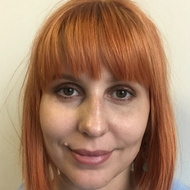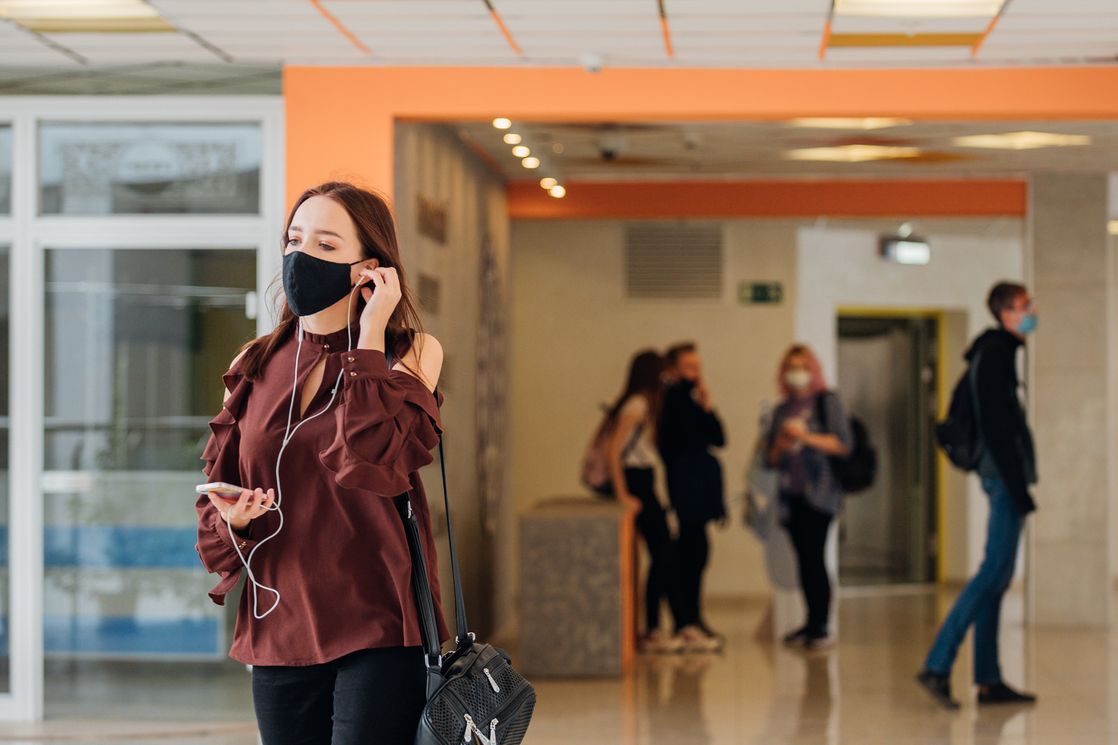Students after the Pandemic: More Anxiety, Less Aggression
.jpg)
Social isolation and limited interaction with other people during the COVID-19 pandemic have had adverse impact on the mental and physical health of Russian students. These are the findings of a survey conducted by HSE University and the Centre of Cross-Cultural Psychology and Ethology of the Institute of Ethnology and Anthropology of the Russian Academy of Sciences (RAS).
Researchers from Don State Technical University, Kazan National Research Technological University, and Ob-Ugric Institute of Applied Research and Development also contributed to the survey.
Valentina Burkova, Senior Research Fellow of the HSE International Centre of Anthropology, presented a report titled ‘Rates of Aggression, Stress, and Anxiety among Russian Students during COVID-19’ at the Homo Sapiens Historicus research seminar that took place at the International Centre of Anthropology.

Valentina Burkova
The survey focused primarily on identifying the level of stress of Russian university students before the pandemic and during its first wave. How much did their anxiety increase? What factors contributed to the rise (or fall) in their anxiety levels? These were the questions the researchers sought to answer.
The researchers conducted an online survey in four Russian cities—Moscow, Rostov-on-Don, Kazan, and Khanty-Mansiysk. The total number of respondents totaled 1,903 people. The average age of the respondents was 21. The majority of them were undergraduate and graduate students. The data were collected in the middle and at the end of the first wave of the COVID-19 pandemic, from April 29 to June 21, 2020. In addition, the data collected in 23 countries as part of an international project were used to interpret the results of the survey and perform a comparative analysis.
The anxiety scores appear to be higher than overall pre-pandemic scores. The significant predictors of stress were age and living conditions during the pandemic. It was also revealed that the level of anxiety and aggression depended on the respondents’ gender.
The surveys conducted before the pandemic show that women tend to demonstrate more anxiety than men. The same is true about the survey conducted during the pandemic, with nearly twice as many women in the most vulnerable category, in which the level of anxiety is on the verge of depression (7.2% versus 3.9%). According to the student respondents, the level of anxiety generally increased during the pandemic, and the level of women’s anxiety almost doubled. Compared to other countries, the situation in Russia is far from the worst: 6% of the respondents appeared to be in the category of the most depressed people, 11% was on the verge of depression, while the rest of the respondents felt fine. Meanwhile, data collected in Brazil demonstrated much higher percentage—17% and 22% respectively, in Canada—12% and 28%, and in the USA—11% and 14%.
Among the cities compared in the survey, Moscow demonstrated a predictably higher percentage of people who fell in the top and mid-depressive categories (8.6% and 19.4% respectively). Similar trends were seen in Khanty-Mansyisk as well—the level of anxiety was even higher there than in Moscow (10.5% and 13.3% respectively). People from Rostov-on-Don appeared to be the least impacted psychologically. All categories of respondents (particularly those struggling with higher anxiety levels) reported having difficulties in doing household chores, working, and studying.
Cross-cultural differences deserve special attention. Brazil appears to be the most anxious nation, followed by Italy, which is easy to explain given the high mortality and the total number of COVID-19 cases. Russia is in the middle on this list, despite high statistics of infection and deaths at the time of the survey.
The researchers also analyzed changes in rates of aggression. As always, the level of physical aggression was higher in men, while other types of aggression usually varied from culture to culture. This survey did not reveal any gender differences at the level of verbal aggression, with anger and hostility a little higher in women—a common picture of Russian sampled respondents.
Most notably, the level of all types of aggression decreased against the backdrop of the pandemic
The survey analysis also reveals that only few respondents see coronavirus as a personal threat. Many more respondents seem to be worried about their families. Moreover, an important factor influencing people’s anxiety appeared to be the level of trust in official media—generally, those who believe in official information sources demonstrate lower anxiety and follow recommendations and instructions of authorities more obediently.
Aggressive responses to official instructions, including the requirements to wear masks and practice social distancing, is another factor that the survey managed to reveal. People who responded violently to official orders—24% of the respondents—demonstrated a much higher level of anxiety as well. One of the questions the respondents were asked during the survey was whether they believed that coronavirus is fake. 82% of the respondents answered negatively.
The survey results were analyzed from the point of view of cultural classification, using two dimensions proposed by Geert Hofstede—Individualism vs. Collectivism and Power Distance. Europe, the USA, and Canada are traditionally seen as highly individualist nations. Among collectivist societies are primarily Asian countries, including the Middle East. Russia falls in between and is characterized by a syncretism of collectivistic and individualist values. There is even a term ‘Russian individualism’. Notably, Russia is one of the nations with the highest scores in the Power Distance rating—the Power Distance is defined as the extent to which the less powerful members of institutions and organisations within a country accept and expect that power is distributed unequally.

The surveyors applied the rates of individualism and collectivism to the samples they used in some previous research to receive the following results. The countries with the highest scores in anxiety are all quite individualistic. This is particularly true of Canada and Italy.
Meanwhile, the most collectivistic countries—Indonesia, Malaysia, Thailand, and Nigeria—are hardly worried about the threat of coronavirus. There is an obvious trend for the countries with high scores in anxiety to demonstrate lower scores on the Power Distance dimension (Canada, Italy, and the USA).
Another dimension used by the researchers was based on the tightness-looseness cultural classification described by Michele J. Gelfand. Loose cultures have a higher tolerance for deviant behavior, and they do not tend to strongly condemn deviations from the accepted norms and traditions. As is the case of Hofstede’s dimensions, the first category comprises many European countries, the USA, and Canada, while countries of the tight culture can be found in Asia, including Arabic nations. Countries with looser cultures had higher scores in anxiety against the backdrop of the pandemic compared to countries of tight cultures.
A survey among Russophone people living abroad shows that existing epidemiologic experience has played a large and positive part in the battle with coronavirus
Asian countries, where epidemics occur periodically, know what to do to prevent the spread of a disease. Moreover, people in these countries tend to go by the idea that ‘by protecting others we are protecting ourselves’, so they follow official orders more obediently and are willing to comply with strict sanctions to curb the spread of a virus. Meanwhile, individualistic nations, particularly Europe and the USA, are being confronted with such an epidemic for the first time.
Mask wearing during a respiratory illness had never been a conventional norm of behaviour in European countries, and those who chose to wear masks at the beginning of the pandemic often faced ridicule, suspicion, and even aggression. Another driver behind people’s behaviour was their individualist position—each individual primarily looks after themselves and their immediate families rather than their neighbourhood as it happens in collectivist societies. Therefore, people of individualist cultures were engaged into a continuous discussion about ‘What is more important, freedom or safety?’
In sum, the currently available data allowed the researchers to come to the cautious conclusion that collectivistic and tighter cultures are more successful in contending with the coronavirus. Knowing cultural differences in how people view and comply with sanitary and hygienic requirements may be helpful in selecting the most efficient way of combatting COVID-19 as well as effective and efficient methods of encouraging people to comply with the necessary requirements.
Valentina Burkova

